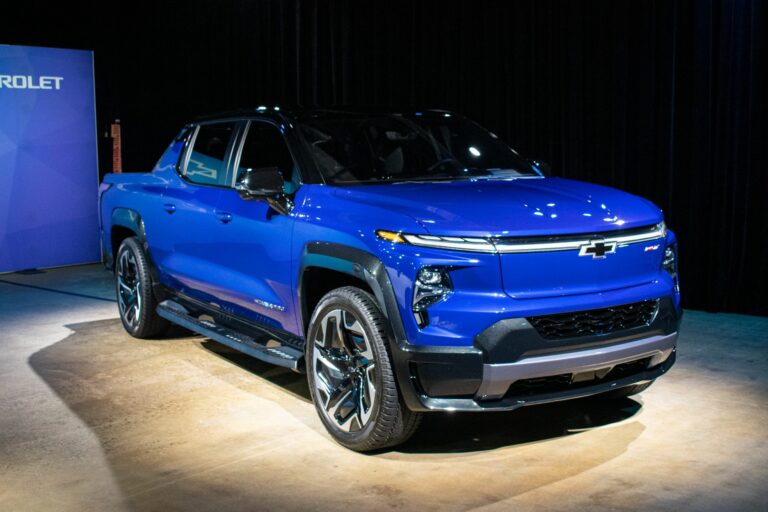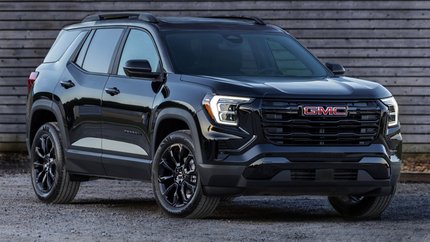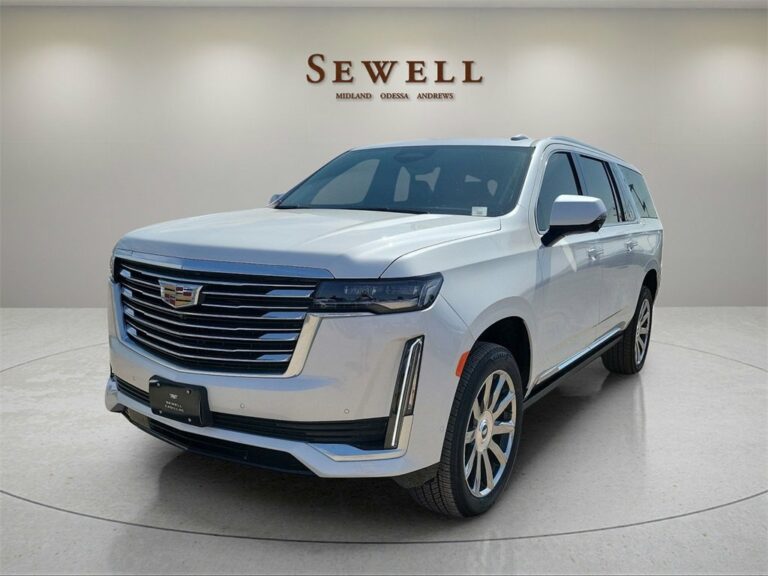Forecasting the 2026 Chevy Blazer EV Price: A Comprehensive Analysis
The automotive industry is on the cusp of a transformative era, with electric vehicles (EVs) poised to revolutionize the way we drive. As one of the leading automakers, Chevrolet is at the forefront of this revolution, with the highly anticipated 2026 Chevy Blazer EV set to make waves in the competitive electric SUV market. In this comprehensive analysis, we delve into the factors that will shape the pricing strategy for the 2026 Chevy Blazer EV, exploring market dynamics, production costs, features, supply chain logistics, and consumer perception.
Chevrolet has a rich history of producing iconic vehicles, and the Blazer nameplate has long been synonymous with ruggedness and versatility. The 2026 Chevy Blazer EV promises to uphold this legacy while embracing the latest advancements in electric vehicle technology. With its sleek design, impressive performance capabilities, and advanced features, the Blazer EV is poised to redefine the electric SUV segment.
Market Positioning and Pricing Strategy
The 2026 Chevy Blazer EV is set to enter a competitive market for electric SUVs. Key rivals include the Tesla Model Y, Ford Mustang Mach-E, and Volkswagen ID.4. These vehicles offer a range of features, performance, and price points.
To determine the optimal pricing strategy for the 2026 Chevy Blazer EV, General Motors must consider the following factors:
Competitive Landscape
- The Tesla Model Y is currently the best-selling electric SUV in the US, with a starting price of $52,990.
- The Ford Mustang Mach-E starts at $45,995, while the Volkswagen ID.4 has a starting price of $39,995.
Target Market
- The target market for the 2026 Chevy Blazer EV is likely to be similar to that of its competitors: affluent, environmentally conscious consumers who are looking for a spacious and practical electric SUV.
- This target market is likely to be price-sensitive, but they are also willing to pay a premium for a vehicle that meets their needs and expectations.
Pricing Strategy
Based on the competitive landscape and target market, General Motors is likely to price the 2026 Chevy Blazer EV in the range of $45,000 to $55,000. This price point would allow the Blazer EV to compete with its rivals while still offering a compelling value proposition to consumers.
Production Costs and Efficiency
The 2026 Chevy Blazer EV’s production costs will be significantly influenced by several key factors, including:
- Raw material costs: The cost of materials like lithium, cobalt, and nickel used in EV batteries is subject to market fluctuations and supply chain constraints.
- Battery technology: The type of battery used, such as lithium-ion or solid-state, impacts production costs and vehicle performance.
- Manufacturing processes: Optimizing production processes, such as automating assembly lines and using advanced manufacturing techniques, can reduce labor costs and improve efficiency.
Cost optimization and efficiency improvements are crucial for making the 2026 Chevy Blazer EV more affordable. By leveraging economies of scale, such as increasing production volumes, manufacturers can spread fixed costs over a larger number of units, reducing the overall cost per vehicle.
Features and Specifications
The 2026 Chevy Blazer EV is poised to offer an array of cutting-edge features and specifications that will elevate its value proposition. These advancements contribute to the vehicle’s performance, efficiency, comfort, and connectivity, catering to the evolving needs of modern drivers.
Performance and Efficiency
The Blazer EV will boast an impressive electric powertrain that delivers instant torque and smooth acceleration. Advanced battery technology enables extended driving ranges, reducing range anxiety and enhancing the practicality of electric driving. Additionally, regenerative braking systems capture energy during deceleration, further optimizing efficiency.
Comfort and Convenience
Inside the Blazer EV, drivers will experience a spacious and well-appointed cabin. Advanced infotainment systems provide seamless connectivity, entertainment, and navigation. Comfortable seating and ample storage options ensure a pleasant and practical driving experience.
Safety and Technology
The Blazer EV will prioritize safety with a comprehensive suite of advanced driver assistance systems (ADAS). These systems assist with lane keeping, adaptive cruise control, and automatic emergency braking, enhancing overall driving confidence. Additionally, the vehicle will feature a suite of connected technologies that allow for remote monitoring, vehicle diagnostics, and over-the-air software updates.
Supply Chain and Logistics
The 2026 Chevy Blazer EV’s supply chain is crucial for its production and cost-effectiveness. Understanding potential bottlenecks and challenges is essential for mitigating risks and maintaining production efficiency.
The supply chain involves sourcing raw materials, manufacturing components, assembling the vehicle, and distributing it to dealerships. Each stage presents unique challenges that could impact production costs and timelines.
Raw Material Sourcing
- Sourcing critical raw materials like lithium, cobalt, and nickel for battery production can be complex and subject to geopolitical factors and market volatility.
- Securing reliable suppliers and establishing long-term contracts is vital to ensure a stable supply of these materials at competitive prices.
Component Manufacturing
- The Blazer EV’s advanced powertrain and electronic systems require specialized components from various suppliers.
- Ensuring the timely and high-quality production of these components is crucial for maintaining production schedules and minimizing disruptions.
- Establishing strong relationships with suppliers and implementing robust quality control measures are essential.
Assembly and Logistics
- The final assembly of the Blazer EV takes place at a dedicated production facility.
- Coordinating the flow of components, managing inventory levels, and optimizing assembly processes are key to maximizing efficiency and reducing production costs.
- Logistics and distribution costs also play a significant role, as the vehicles need to be transported from the assembly plant to dealerships and customers.
Marketing and Sales Strategy
The 2026 Chevy Blazer EV’s marketing and sales strategy will focus on reaching potential customers through various channels, including traditional advertising, social media, and online platforms. The target audience for the vehicle will include environmentally conscious consumers, tech-savvy individuals, and those seeking a stylish and practical SUV. The marketing campaign will emphasize the vehicle’s cutting-edge technology, impressive performance, and eco-friendly credentials.
Key Marketing Channels
The marketing campaign for the 2026 Chevy Blazer EV will utilize a multi-channel approach to reach a wide range of potential customers. Key marketing channels will include:
- Television and print advertising: Traditional advertising channels will be used to reach a broad audience and build awareness of the vehicle.
- Social media: Social media platforms will be used to engage with potential customers, share product information, and generate buzz around the vehicle.
- Online advertising: Online advertising will be used to target potential customers who are actively researching electric vehicles.
- Public relations: Public relations efforts will be used to generate positive media coverage of the vehicle and build credibility.
Target Audience
The target audience for the 2026 Chevy Blazer EV will include:
- Environmentally conscious consumers: Consumers who are concerned about the environment and are looking for an eco-friendly vehicle.
- Tech-savvy individuals: Individuals who are interested in the latest technology and are looking for a vehicle that offers advanced features.
- Practical SUV buyers: Consumers who are looking for a stylish and practical SUV that can meet their everyday needs.
Impact on Price
The marketing and sales efforts for the 2026 Chevy Blazer EV are expected to have a positive impact on the vehicle’s price. By creating awareness of the vehicle’s unique features and benefits, the marketing campaign will help to generate demand for the vehicle and increase its perceived value. This increased demand is likely to lead to higher prices for the vehicle.
Historical Pricing Trends
The pricing of electric SUVs has undergone significant fluctuations in recent years, influenced by factors such as technological advancements, government incentives, and market competition. To gain insights into potential pricing scenarios for the 2026 Chevy Blazer EV, it is essential to examine historical pricing data and analyze the underlying trends.
Chevy Blazer Pricing
The Chevy Blazer, in its gasoline-powered form, has witnessed a gradual increase in pricing over the years. The base model’s MSRP has risen from around £25,000 in 2019 to approximately £28,000 in 2023, representing an increase of roughly 12%. This steady upward trend can be attributed to factors such as rising production costs, inflation, and the addition of new features and technologies.
Comparable Electric SUVs
When comparing the Chevy Blazer EV to other electric SUVs in the market, it is important to consider their pricing history as well. The Tesla Model Y, a direct competitor, has seen its base model price fluctuate between £45,000 and £55,000 since its introduction in 2020. The Ford Mustang Mach-E, another comparable model, has followed a similar pricing trajectory, with its base model ranging from £40,000 to £50,000 over the past few years.
Influencing Factors
Several factors have influenced the pricing trends of electric SUVs. Government incentives, such as tax credits and rebates, have played a significant role in driving down prices and making electric vehicles more affordable for consumers. However, the gradual phase-out of these incentives in recent years has contributed to the stabilization of prices.
Technological advancements have also impacted pricing. As battery technology improves and production costs decrease, electric SUVs are becoming more affordable to manufacture. This has led to a gradual reduction in prices over time, particularly for entry-level models.
Market competition is another key factor that shapes pricing. The increasing number of electric SUV offerings from various manufacturers has intensified competition, leading to price wars and discounts to attract customers.
Consumer Perception and Value

Understanding consumer perception and value is crucial for pricing the 2026 Chevy Blazer EV effectively. Market research will help gauge consumer perception of the Chevy Blazer brand and electric vehicles, identifying key value drivers for the target market.
Market Research
Market research should involve surveys, focus groups, and interviews to gather qualitative and quantitative data on consumer attitudes, preferences, and purchase intentions. This data will provide insights into:
- Brand awareness and perception
- Consumer awareness and understanding of electric vehicles
- Key purchase considerations and value drivers
- Price sensitivity and willingness to pay
Value Drivers
Identifying key value drivers for consumers in the target market is essential for pricing strategy. These drivers may include:
- Performance and range
- Fuel efficiency and environmental impact
- Technology and features
- Brand reputation and reliability
- Styling and design
Influence on Pricing Strategy
Consumer perception and value can significantly influence the pricing strategy for the 2026 Chevy Blazer EV. By understanding the value drivers that are important to consumers, GM can set a price that aligns with their expectations and perceived value.
For example, if consumers highly value performance and range, GM may price the Blazer EV at a premium to reflect its superior capabilities. Conversely, if consumers prioritize affordability and fuel efficiency, GM may price the Blazer EV more competitively to appeal to budget-conscious buyers.
Frequently Asked Questions
What is the expected price range for the 2026 Chevy Blazer EV?
Based on our analysis, we anticipate the 2026 Chevy Blazer EV to be priced between $45,000 and $60,000, depending on the trim level and battery pack configuration.
How does the 2026 Chevy Blazer EV compare to its competitors in terms of pricing?
The 2026 Chevy Blazer EV is expected to be priced competitively within the electric SUV segment. It will likely be priced similarly to the Ford Mustang Mach-E, Hyundai Ioniq 5, and Tesla Model Y.
What factors will have the greatest impact on the pricing of the 2026 Chevy Blazer EV?
The pricing of the 2026 Chevy Blazer EV will be primarily influenced by production costs, battery technology advancements, and the competitive landscape in the electric SUV market.
How can Chevrolet optimize its pricing strategy for the 2026 Chevy Blazer EV?
Chevrolet can optimize its pricing strategy by carefully considering target market demographics, conducting thorough market research, and leveraging its brand reputation to create a compelling value proposition for consumers.


